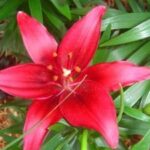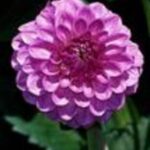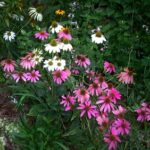In order to encourage new growth, ensure overall plant health, keep flower beds looking neat, and allow for bigger and brighter blooms proper deadheading is essential for annual and perennial plants. Many novice gardeners make the mistake of planting their garden and then leaving it to grow at will, but deadheading is a chore that you should perform weekly.
When you check your flowering plants for spent blooms you ensure that the remaining blooms and plant will not be deprived of any energy and nutrients being wasted on old blooms. This guide will discuss deadheading, detail the reasons for its necessity, and describe how to properly deadhead flowering annuals and perennials as well as flowering shrubs.
What is deadheading?
Deadheading is the garden procedure where spent blooms are removed from flowering plants in order to benefit the overall plant. The practice of deadheading is also used in order to collect seeds from plants for the following year.
Reasons to Deadhead
There are several reasons to deadhead flowers, the first being for aesthetic reasons. Spent flowers do not look very attractive on a plant, especially when there are nearby flowers still blooming. Keeping with the theme of aesthetics, deadheading keeps the flower bed tidy and looking presentable by pre-empting any spent blooms from littering the area.
Two of the most important reasons to deadhead are for the welfare of the plant. Deadheading saves the plants from continuing to send vital energy and nutrients to the spent bloom, when the bloom is removed the rest of the plant can use the energy. Secondly, the plant will put its remaining energy into new plant growth and blooms instead of producing seeds early on in the season. For this reason, deadheading is especially important during times of drought.
When You Should Deadhead Flowers
Flowering plants and shrubs need to be deadheaded when the blooming flowers are past their prime. Be careful not to confuse a spent bloom with a wilting one, wilting flowers just require water. When a flower begins to fade in color and the petals begin to shrivel and dry out they are ready to be removed.
Flowers that Should be Deadheaded
The following flowers and shrubs should be deadheaded regularly for optimal health and appearance of the plant.
– Petunias
– Geraniums
– Azalea
– Rhododendron
– Zinnia
– Marigolds
– Hydrangea
– Tulips
– Hyacinth
How to Deadhead Plants
This important task is relatively easy to accomplish, requiring only a pair of shears or just two fingers to pinch with. To begin check your flowering plant for spent blooms, if the flower is on a short stem pinch off the spent flower. For flowers on long stems that are soft use shears to cut off the blooms.
To pinch off flowers, grab the stem directly below the flower between your thumb and forefinger. Snap the stem and remove the flower. On soft stemmed flowers that need to be cut, take your shears and cut the stem about half an inch below the bloom. Collect all the spent flowers and any leaves that have fallen around the plant.
Follow the same instructions, and use shears, when deadheading flowering shrubs.
Deadheading Tips
At the end of the flowering season allow spent blooms to remain on the plant. The flower will produce seeds which can be collected or allowed to reseed themselves in your garden.
Certain flowers, such as sedum and chrysanthemums should be deadheaded before your area experiences its first frost. This applies to most fall blooming flowers.
When you deadhead flowering shrubs you should also prune back stems and remove some buds in order to encourage growth.







